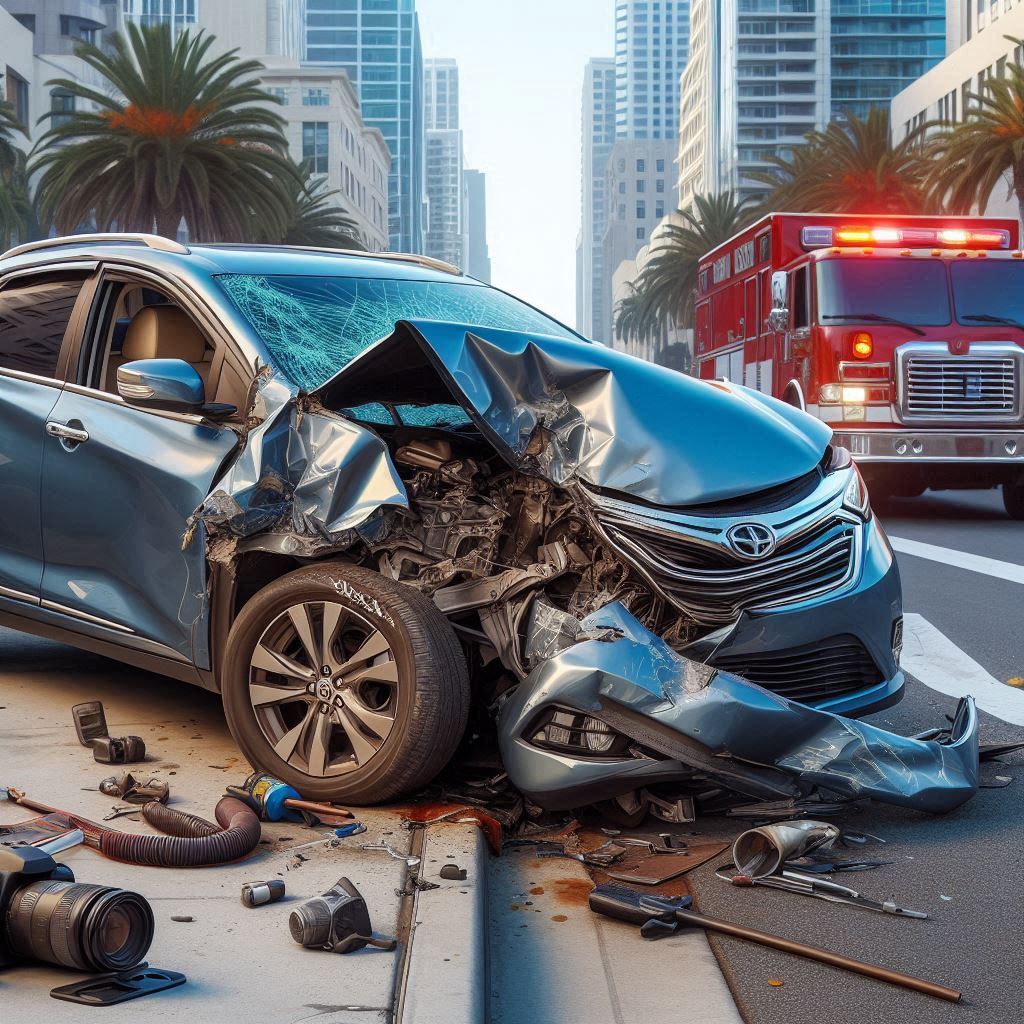
Understanding Rideshare Insurance Coverage: A Comprehensive Guide
Uber Lyft Insurance Coverage CA: The Complex World of Rideshare Insurance
If you’re one of the millions of Americans who drive for Uber, Lyft, or another rideshare company, you’re likely familiar with the convenience and flexibility these platforms offer. What might be less clear, however, is how insurance works when you’re using your personal vehicle for commercial purposes. The insurance coverage gap that exists for rideshare drivers has led to significant confusion and, in some cases, devastating financial consequences after accidents.
At Credible Law, based in downtown San Diego, we represent clients involved in rideshare accidents. Our experience has shown us that many drivers and passengers don’t fully understand the insurance implications until it’s too late. This comprehensive guide aims to demystify rideshare insurance coverage, helping you protect yourself financially and legally.
The Three Periods of Rideshare Driving
To understand rideshare insurance coverage properly, you first need to recognize that insurance companies and rideshare platforms divide driving time into three distinct periods:
Period 0: App Off
When you’re driving your personal vehicle with the rideshare app turned off, your personal auto insurance policy is in effect. This is straightforward—you’re covered just as you would be during any personal driving time.
Period 1: App On, Waiting for a Ride Request
Once you turn on the app and are available to accept rides, but haven’t yet accepted one, you enter what’s known as Period 1. This is where insurance coverage becomes complicated. Most personal auto insurance policies exclude coverage when you’re using your vehicle for commercial purposes, creating a potential gap in coverage.
Period 2: Ride Accepted, En Route to Pick Up Passenger
After accepting a ride and while en route to pick up your passenger, you’re in Period 2. During this time, rideshare companies typically provide increased liability coverage.
Period 3: Passenger in Vehicle
With a passenger in your car until drop-off, you’re in Period 3, where rideshare companies provide their highest level of coverage.
The Insurance Gap Problem
The most significant insurance issue for rideshare drivers occurs during Period 1. During this time:
- Your personal auto insurance may not cover you because you’re engaging in commercial activity
- Rideshare company insurance provides only limited liability coverage
- You may be personally exposed to significant financial risk
This gap has led to situations where drivers involved in accidents during Period 1 discovered they had minimal or no coverage, resulting in substantial out-of-pocket expenses for vehicle repairs, medical bills, and liability claims.
What Insurance Coverage Do Rideshare Companies Provide?
Understanding what the major rideshare companies provide is essential for drivers and passengers alike. Let’s examine the coverage offered by Uber and Lyft, the two largest rideshare operators in the United States.
Uber Insurance Coverage
Period 1:
- Liability coverage: $50,000 per person for bodily injury
- $100,000 per accident for bodily injury
- $25,000 per accident for property damage
- No collision or comprehensive coverage
Periods 2 and 3:
- $1,000,000 third-party liability coverage
- Uninsured/underinsured motorist bodily injury coverage
- Contingent comprehensive and collision coverage (with a $2,500 deductible)
Lyft Insurance Coverage
Lyft’s coverage structure is similar to Uber’s:
Period 1:
- Liability coverage: $50,000 per person for bodily injury
- $100,000 per accident for bodily injury
- $25,000 per accident for property damage
- No collision or comprehensive coverage
Periods 2 and 3:
- $1,000,000 third-party liability coverage
- Uninsured/underinsured motorist bodily injury coverage
- Contingent comprehensive and collision coverage (with a $2,500 deductible)
While this coverage may seem comprehensive, it’s important to understand the limitations:
- The high deductibles ($1,000-$2,500) mean you’ll pay significant out-of-pocket costs before insurance kicks in
- During Period 1, there’s no collision coverage for your vehicle
- The coverage is contingent, meaning the rideshare company’s insurance may require you to file with your personal insurance first (which may deny the claim)
Rideshare Insurance Options for Drivers
To address the coverage gap, several insurance solutions have emerged:
1. Rideshare Endorsements
Many major insurance companies now offer rideshare endorsements (sometimes called “rideshare gap coverage”) that can be added to your personal auto policy. These endorsements typically:
- Extend your personal auto coverage through Period 1
- Cover the gap between your personal policy and the rideshare company’s coverage
- Cost approximately 15-20% more than a standard personal auto policy
Companies offering rideshare endorsements include:
- State Farm
- Allstate
- GEICO
- Progressive
- USAA
- Farmers
- Mercury Insurance
2. Commercial Auto Insurance
Some drivers opt for commercial auto insurance, which typically provides:
- Coverage during all periods of rideshare driving
- Higher liability limits
- More comprehensive protection
However, commercial policies generally cost 3-5 times more than personal auto insurance, making them prohibitively expensive for many part-time drivers.
3. Hybrid Policies
Some insurers have developed hybrid policies specifically designed for rideshare drivers that provide seamless coverage across all periods. These policies typically cost more than personal auto insurance with a rideshare endorsement but less than commercial coverage.
What Happens After a Rideshare Accident?
Understanding the claims process after a rideshare accident is crucial. Here’s what typically happens:
If You’re a Driver:
- Report the accident immediately to both your personal insurance and the rideshare platform
- Document everything – take photos, gather witness information, and keep records of all communications
- Determine which insurance applies based on which period you were in
- File the appropriate claims with the relevant insurance companies
- Consult with a rideshare accident attorney if there are coverage disputes or serious injuries
If You’re a Passenger:
- Report the accident through the app – both Uber and Lyft have in-app accident reporting features
- Document your injuries and the accident scene if possible
- Seek medical attention immediately, even for seemingly minor injuries
- File a claim with the rideshare company’s insurance provider
- Consider consulting with an attorney specializing in rideshare accidents, especially if you’ve sustained significant injuries
Common Insurance Issues in Rideshare Accidents
Based on our experience at Credible Law handling numerous rideshare accident cases in San Diego, we’ve identified several common insurance-related issues:
Coverage Denials During Period 1
Many drivers discover too late that they have no coverage during Period 1 if they don’t have a rideshare endorsement. This has led to drivers facing tens of thousands of dollars in liability and vehicle repair costs.
Disputes Over Which Period Applied
Insurance companies sometimes dispute which period the driver was in at the time of the accident, potentially leaving victims in limbo as they fight for coverage.
High Deductibles
The $1,000-$2,500 deductibles for comprehensive and collision coverage during Periods 2 and 3 can be financially challenging for many drivers.
Delayed Claims Processing
Rideshare accident claims often involve multiple insurance companies, which can lead to delays in processing and payment.
Insufficient Coverage for Serious Injuries
In cases involving severe injuries, the available insurance coverage may be insufficient to cover all medical expenses and lost wages.

Legal Considerations for Rideshare Accidents in California
California has implemented specific regulations regarding rideshare operations and insurance requirements that affect drivers and passengers in San Diego and throughout the state.
California’s Rideshare Insurance Requirements
In 2015, California enacted legislation (AB 2293) establishing minimum insurance requirements for transportation network companies (TNCs) like Uber and Lyft:
- Period 1: Primary liability coverage of at least $50,000 for death and personal injury per person, $100,000 for death and personal injury per incident, and $30,000 for property damage
- Periods 2 and 3: Primary liability coverage of at least $1 million
Vicarious Liability Issues
An ongoing legal debate centers around whether rideshare companies can be held vicariously liable for the actions of their drivers. California courts have returned mixed rulings on this issue, with some cases establishing that rideshare companies maintain an employer-employee relationship with drivers under certain circumstances.
Recent Legal Developments
The implementation of California’s AB5 (and subsequent Proposition 22) has created complex legal questions about the employment status of rideshare drivers and the corresponding liability of the platforms. These developments continue to shape how insurance claims are handled in rideshare accident cases.
Special Considerations for San Diego Rideshare Drivers and Passengers
San Diego’s unique characteristics as a major tourist destination with a significant military presence create special considerations for local rideshare operations:
Tourist Areas and Airport Runs
San Diego’s popular tourist areas like Gaslamp Quarter, Pacific Beach, and the airport see heavy rideshare traffic. Accidents in these congested areas may involve out-of-state passengers, creating jurisdictional complications for insurance claims.
Military Personnel Considerations
With several major military installations in the area, many rideshare drivers and passengers in San Diego are military personnel. This can introduce complexities involving military benefits, VA healthcare, and federal jurisdictional questions.
Local Accident Hotspots
Certain San Diego intersections and roadways see higher rates of rideshare accidents, including:
- The I-5/I-8 interchange
- Downtown grid streets during peak hours
- Coastal roads during tourist season
Understanding these local factors can help drivers and passengers better prepare for and navigate potential insurance issues.
Steps to Protect Yourself Before an Accident Occurs
Whether you’re a driver or passenger, taking proactive steps can help ensure you’re protected:
For Drivers:
- Review your personal auto policy carefully for exclusions related to rideshare driving
- Purchase appropriate rideshare insurance coverage—either an endorsement or commercial policy
- Understand exactly when each insurance policy applies
- Keep detailed records of your driving time and which period you were in if an accident occurs
- Consider installing a dashcam to provide evidence in disputed claims
- Maintain higher liability limits than the minimum required whenever possible
For Passengers:
- Verify your own health insurance coverage for potential injuries
- Understand that you may be covered by the rideshare company’s $1 million liability policy during your ride
- Know your options for uninsured/underinsured motorist situations
- Check if your credit card offers supplemental insurance for rideshare trips
Frequently Asked Questions About Rideshare Insurance
Does my personal auto insurance cover me when driving for Uber or Lyft?
Most standard personal auto policies specifically exclude coverage when using your vehicle for commercial purposes like rideshare driving. Without a specific rideshare endorsement, you likely have no coverage during Period 1 and may face claim denials even during personal use if your insurer discovers you’re a rideshare driver.
How do I know which insurance applies after a rideshare accident?
The applicable insurance depends on which period you were in when the accident occurred:
- App off: Your personal auto insurance
- Period 1 (app on, waiting for request): Limited liability coverage from the rideshare company plus your personal policy with rideshare endorsement if you have one
- Periods 2 and 3 (en route to pickup or with passenger): The rideshare company’s insurance is primary
What happens if I’m in an accident with an uninsured driver while doing rideshare?
During Periods 2 and 3, both Uber and Lyft provide uninsured/underinsured motorist coverage. During Period 1, you would need to rely on your own uninsured motorist coverage if you have it. This highlights the importance of having appropriate rideshare insurance coverage.
Do passengers need their own insurance when using rideshare services?
While passengers don’t need special insurance to use rideshare services, having your own health insurance and potentially uninsured motorist coverage can provide additional protection if you’re injured in a rideshare accident.
Can I be dropped by my insurance company for driving for Uber or Lyft?
Yes, if you don’t disclose to your insurance company that you’re driving for a rideshare service and they find out (typically after an accident), they may deny your claim and potentially cancel your policy for misrepresentation. It’s always best to be upfront with your insurer about your rideshare activities.
What insurance do I need if I only drive for rideshare part-time?
Even part-time rideshare drivers face the same insurance gaps and risks as full-time drivers. At minimum, you should obtain a rideshare endorsement on your personal policy. The frequency of your driving doesn’t change the potential financial exposure of an accident during Period 1.
When to Consult a Rideshare Accident Attorney
While many accidents can be resolved through the standard insurance claims process, certain situations warrant consulting with an attorney specializing in rideshare accidents:
- Severe injuries requiring extensive medical treatment
- Disputes over which insurance applies
- Coverage denials from either your personal insurance or the rideshare company’s insurance
- Accidents involving multiple vehicles or parties
- Instances where the available insurance coverage seems insufficient for your damages
At Credible Law in San Diego, we’ve developed specific expertise in navigating the complexities of rideshare accident cases. Our attorneys understand the unique insurance issues that arise in these situations and can help ensure you receive the compensation you deserve.
Conclusion: Staying Protected in the Evolving Rideshare Landscape
The rideshare industry continues to evolve, and with it, the insurance landscape for drivers and passengers. Staying informed about coverage options and requirements is essential for protecting yourself financially and legally.
For drivers, the most important takeaway is to close the insurance gap during Period 1 by obtaining appropriate rideshare coverage. The relatively small additional cost of a rideshare endorsement can save you from potential financial catastrophe in the event of an accident.
For passengers, understanding the coverage provided by rideshare companies helps you know your rights and options if you’re injured during a trip. While the $1 million liability policies seem substantial, complex cases or severe injuries can quickly exceed available coverage.
Whether you’re a driver or passenger involved in a rideshare accident in San Diego, the attorneys at Credible Law are here to help you navigate the claims process and ensure you receive fair compensation. Our specialized knowledge of rideshare insurance issues allows us to advocate effectively for our clients in this complex area of personal injury law.
About Credible Law
Located in downtown San Diego, Credible Law specializes in rideshare accident cases and other personal injury matters. Our experienced attorneys understand the unique challenges of rideshare insurance claims and work tirelessly to protect our clients’ rights and interests. If you’ve been involved in a rideshare accident or have questions about rideshare insurance coverage, contact us today for a free consultation.
Disclaimer: This article is intended for informational purposes only and does not constitute legal advice. For guidance on your specific situation, please consult directly with an attorney.

